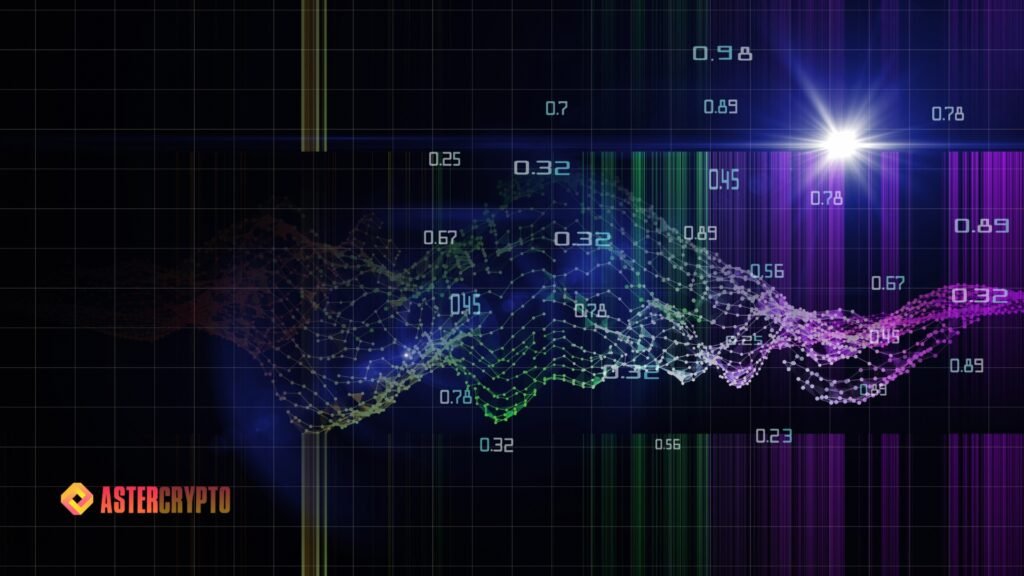Blockchain Analysis: Blockchain technology, which is frequently praised for its revolutionary nature, is the foundation upon which decentralized systems and cryptocurrencies are built. While blockchain’s decentralization, immutability, and openness all have their uses, they also make it difficult to guarantee security, compliance, and the absence of fraud. Here is where the technology becomes relevant. In order to keep the network secure and in compliance with regulations, as well as to track transactions and derive useful insights from the data stored on the blockchain, blockchain analysis is necessary. This article explores the most recent developments and trends in blockchain analysis, showcasing its significance in the dynamic digital world.
Data traceability and interpretation on blockchain networks constitute . Every single transaction that occurs on a blockchain is recorded since blockchains are basically public ledgers. Anyone with access to the blockchain can see these transactions, which brings about unprecedented openness. Blockchain data is complex and massive, making manual analysis impossible. As a result, complex methods and tools have been created to make blockchain analysis easier.
Key Areas of Blockchain Analysis
Transaction Tracking and Forensics:
Analysis of blockchain transactions is one of its main uses. Due to blockchain transactions’ pseudonymity, sophisticated approaches are needed to trace wallet addresses to people. Law enforcement needs this information to investigate fraud, money laundering, and terrorism funding. Authorities can use tools like CipherTrace, Elliptic, and Chainalysis to track the movement of money across blockchain networks.
Regulatory Compliance:
The importance of blockchain in guaranteeing compliance with anti-money laundering (AML) and know-your-customer (KYC) requirements has grown in response to the global regulatory bodies’ heightened focus on cryptocurrencies. Organizations can detect questionable actions, notify the proper authorities, and steer clear of heavy penalties by examining blockchain data. Exchanges, banks, and other cryptocurrency-related companies should pay close attention to this.
Market Insights and Intelligence:

The importance of blockchain analysis in guaranteeing compliance with anti-money laundering (AML) and know-your-customer (KYC) requirements has grown in response to the global regulatory bodies’ heightened focus on cryptocurrencies. Organizations can detect questionable actions, notify the proper authorities, and steer clear of heavy penalties by examining blockchain data. Exchanges, banks, and other cryptocurrency-related companies should pay close attention to this.
Smart Contract Analysis:
The significance of studying smart contracts has grown in tandem with the expansion of decentralized finance (DeFi). To make sure smart contracts are secure and only use their intended functionality, analysis tools for the blockchain can check them for flaws. The safety and soundness of DeFi systems depend on this sort of investigation.
Latest Developments in Blockchain Analysis
The field of blockchain analysis is rapidly evolving, with new tools and techniques being developed to address emerging challenges. Some of the latest trends include:

Machine Learning and AI:
In addition, Blockchain analysis tools are getting smarter and more efficient by using AI and ML. Technology like this can swiftly sift through mountains of data in search of trends and outliers that humans could overlook. One use case for AI-powered technologies is the detection of suspicious transaction patterns that may point to insider trading or fraud.
Privacy Coin Analysis:
The increased anonymity afforded by privacy coins like Zcash and Monero makes blockchain research difficult. In addition, Nevertheless, developers and academics are making great progress in examining these coins. On privacy-focused blockchains, approaches like heuristic-based procedures, statistical analysis, and pattern recognition are being utilized to de-anonymize transactions.
Cross-Chain Analysis:
The proliferation of interoperability solutions and cross-chain platforms has made it necessary to broaden the scope of blockchain analysis beyond individual blockchains. In a multi-chain ecosystem, tracking transactions across different blockchains is essential for understanding asset movement. This technique is called cross-chain analysis. This is crucial knowledge to have if thieves are attempting to launder funds by moving them to a different blockchain.
Real-Time Monitoring and Alerts:
Businesses that need to respond fast to suspicious actions have realized the importance of real-time blockchain monitoring. In addition, with the advent of real-time warnings, users of advanced blockchain tools may now react instantly to any recognized compliance concerns or possible dangers. In addition, Timely mitigation of risks and prevention of financial losses can be achieved through this proactive strategy.
NFT Analysis:
In addition, Blockchain research has taken on new dimensions with the proliferation of non-fungible tokens (NFTs). In addition, There has been recent interest in studying NFT market movements and transactions. Researchers are adding ownership data, market dynamics, and NFT origins to blockchain analysis tools to keep up with the ever-changing NFT ecosystem.
Blockchain Analysis Future
In addition, there will likely be more advancements in the future, particularly in the areas of artificial intelligence integration, privacy coin analysis, and cross-chain monitoring. In addition, With blockchain technology gaining traction, there will be a greater need for sophisticated tools. These tools will secure and standardize blockchain networks and provide critical data for smart economic decision-making.
In addition, Ultimately, analysis plays a crucial role in the Bitcoin ecosystem by facilitating openness, safety, and conformity in a digitally intricate environment. In addition, All parties involved, including corporations, authorities, and analysts, must be vigilant in keeping up with the ever-changing field.
Read More: Auditing Blockchain: Ensuring Decentralised Security Transparency
FAQs
Q1: What is blockchain analysis, and why is it important?
Answer: Blockchain analysis reads, interprets, and draws conclusions from blockchain data. Track transactions, find patterns, and link blockchain addresses to real-world entities. Bitcoin ecosystem transparency, security, and regulatory compliance depend on blockchain. It finds and prevents money laundering and fraud and gives investors and traders market knowledge.
Q2: How is blockchain analysis used for regulatory compliance?
Answer: Blockchain analysis is essential for AML and KYC compliance. Businesses can detect suspicious activity, track funds, and report criminal activity to regulators by studying blockchain data. This allows Bitcoin exchanges, financial institutions, and others to avoid sanctions and stay lawful.
Q3: What challenges are associated with blockchain analysis?
Answer: Blockchain analysis faces data privacy, scalability, and regulatory changes. Blockchain data analysis may reveal sensitive information. Balancing transparency and confidentiality is necessary. Data volume increases as blockchain networks grow, needing more complex scaling technologies. To comply with changing regulations, analysis tools must be updated often.

